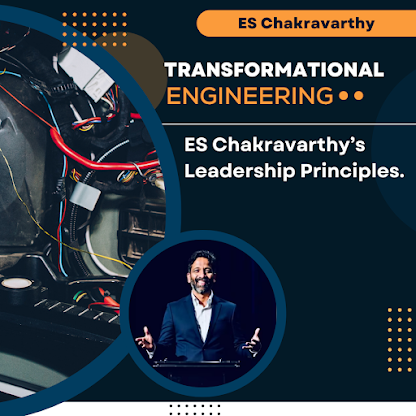The Future of Engineering: ES Chakravarthy’s Vision for the Next Generation
Engineering serves as an acceleration force behind progress innovation and technological developments. The current time represents an accelerated period of artificial intelligence growth along with digital transformation and automation which is changing engineering as an entity. ES Chakravarthy sees future engineers as change-minded learners who develop interdisciplinary abilities to thrive against market competition.
Adapting to the Digital Revolution
In the assessment of ES Chakravarthy, the digital revolution is progressing in the present rather than remaining in the future. Engineering students and professionals must obtain competence in data science in addition to machine learning skills and Internet of Things (IoT) capabilities. He tells us that coding alongside automation including software-driven applications extends their reach beyond IT sectors and thus becomes a fundamental requirement in all engineering disciplines. Engineering professionals need to merge these high-tech systems into their work by building enhanced answers and process enhancement.
The Role of AI and Automation in Engineering
Modern engineering encounters fundamental changes through artificial intelligence together with automation systems. ES Chakravarthy foresees AI systems becoming an engineering decision aid that diminishes mistakes from humans while boosting operational output. The introduction of automation to production processes will achieve production streamlining while creating fresh career opportunities in robotics cyber-physical systems and smart manufacturing. Bright engineers should start developing their abilities in these modern technologies before they enter the professional landscape according to his opinion.
The Importance of Sustainability in Engineering
The vital element of ES Chakravarthy’s vision includes sustainability. Engineers now must give priority to sustainable technology advancements alongside renewable power systems and environment-friendly solutions because environmental worries are growing. Engineering projects should adopt sustainable practices according to him while using biodegradable materials and efficient designs together with waste reduction technologies. Engineered solutions that handle present-day issues should also work toward creating a lasting environmentally friendly future.
Bridging the Gap Between Industry and Academia
Engineering education faces its most significant obstacle when academic learning separates from commercial industry practice. ES Chakravarthy encourages engineering institutions and universities to support industry partnerships that enable students practical learning experiences. Engineers require three critical factors—internships and industry workshops combined with practical training programs—to succeed in professional settings. The author recommends academic institutions revise their educational material regularly as per industry requirements.
Encouraging Innovation and Entrepreneurship
Innovation alongside entrepreneurship stands as a vital factor that will mold the upcoming direction of engineering. ES Chakravarthy suggests to engineering students that they should develop their professional skills by researching independently and establishing startups rather than pursuing traditional career paths. Engineers who combine technology access to global connectivity and financing chances will progress innovative answers that power industrial development. Professional development requires engineering students to develop problem-solving abilities together with critical thinking along with innovative thinking skills and problem-solving abilities.
Conclusion
ES Chakravarthy’s vision of the future of engineering is, therefore, compelling and can be summarized as follows: Digitalization, Artificial intelligence and Automation, sustainable development, academia & industry relationship, and Innovation. As engineering advances to the next level, the new generation of engineers to face new challenges and adapt new ways of working to contribute to the development of a technology and sustainable generation. With the right skills and mindset, engineers can contribute to society in ways never imagined before.
.png)


Comments
Post a Comment